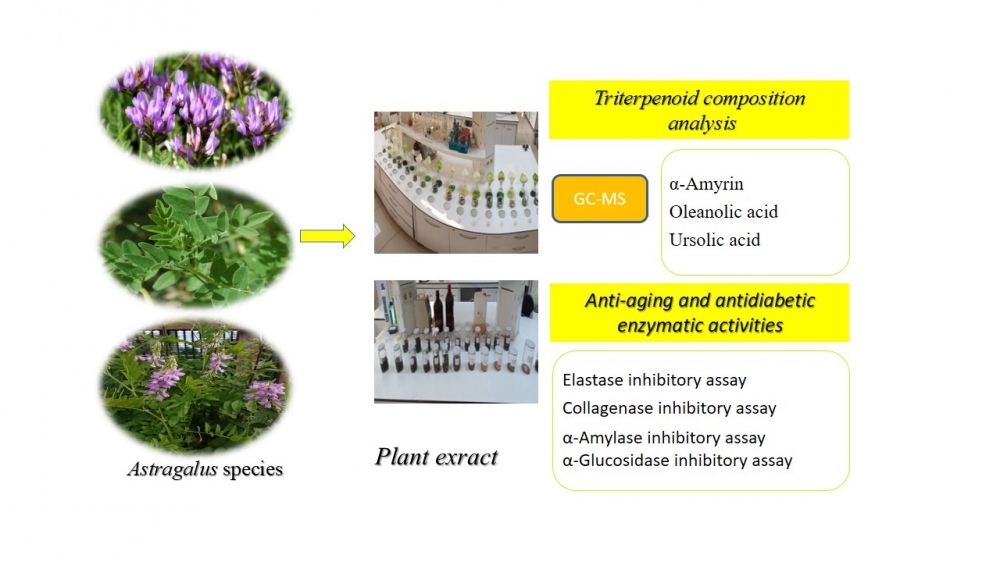JOURNAL 2951
Records of Agricultural and Food Chemistry
Year: 2023 Issue: 2 July-December
p.36 - 44
Viewed 1517 times.
GRAPHICAL ABSTRACT

ABSTRACT
Astragalus L. is the largest flowering genus of the Fabaceae family and is represented by approximately 3000 species worldwide. This study aims to determine the anti-aging and anti-diabetes effects of Astragalus leporinus, A. distinctissimus, and A. schizopterus, three endemic species in Anatolia. The anti-aging effects against elastase and collagenase enzymes and the anti-diabetic effects against α-glucosidase and α-amylase enzymes were determined. Some triterpene contents were also determined by GC-MS. Ursolic acid (85.86 mg/g extract) and oleanolic acid (49.11 mg/g extract) were detected in the acetone extract of A. schizopterus species, and only (2.10 mg/g extract) oleanolic acid was detected in the ethanol extract. α-Amyrin (5.46 mg/g extract), oleanolic acid (6.09 mg/g extract), and ursolic acid (8.95 mg/g extract) were identified in the acetone extract of A. distinctissimus species. In terms of anti-aging, A. leporinus var. hirsutus ethanol extract has shown the highest activity in elastase and collagenase inhibition activity methods (inhibition %: 17.26±0.18 and 11.47±0.15, respectively), standard reference substances (oleanolic acid and epicatechin gallate, inhibition %: 43.80±0.76, 84.08±0.49, respectively). When it is evaluated in terms of anti-diabetic, it was determined that acetone extracts of A. schizopterus and A. distinctissimus species inhibited α-glucosidase at a higher level than acorbose, which was used as the standard reference substance, at all concentrations. In addition, it has also been observed that both acetone and ethanol extracts of the three species studied showed moderate inhibitory activity against the α-amylase enzyme. When the results obtained were evaluated, it is possible to state that A. schizopterus and A. distinctissimus species used as animal feed should be subjected to more detailed studies to be used for the pharmaceutical industry, as they are rich in oleanolic and ursolic acids and show anti-diabetic.
KEYWORDS- Astragalus
- GC-MS
- oleanolic acid
- ursolic acid
- anti-aging
- anti-diabetic